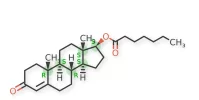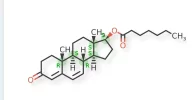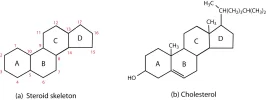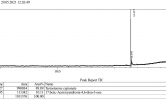You should try UGBB if you do let me know I would love seeing what happens ahahhaThanks very much for taking the time to share that. It's the love of learning and feedback like yours that makes all this work worthwhile. I appreciate it.
That is a useful data point. I didn't know I had an
impersonator (?).
In my time I have been on TNation (banned twice and now on "mute"), ExcelMale (banned), MesoRx (still here), SST (still there), and ProMuscle (don't post, what's the point? LoL).
So I wouldn't say a ton. The first two aren't source forums. If there are other ones I am on please let me know haha.
Take care.
Navigation
Install the app
How to install the app on iOS
Follow along with the video below to see how to install our site as a web app on your home screen.
Note: This feature may not be available in some browsers.
More options
Style variation
You are using an out of date browser. It may not display this or other websites correctly.
You should upgrade or use an alternative browser.
You should upgrade or use an alternative browser.
Readalots Enhanced Testing
- Thread starter Dirthand
- Start date
R
readalot
Guest
They would not let me in. Denied my registration multiple times.You should try UGBB if you do let me know I would love seeing what happens ahahha
My bad, I worded that oddly saw you in sponsored threads of the underground forum at Meso, not an entirely different forum. I'm going to take a chance on one of the vendors might submit to jano for some labs of my own.Thanks very much for taking the time to share that. It's the love of learning and feedback like yours that makes all this work worthwhile. I appreciate it.
That is a useful data point. I didn't know I had an
impersonator (?).
In my time I have been on TNation (banned twice and now on "mute"), ExcelMale (banned x 3 or 4), MesoRx (2x soft ban, still here), SST (still there), and ProMuscle (don't post, what's the point? LoL).
So I wouldn't say a ton. The first two aren't source forums. If there are other ones I am on please let me know haha.
Take care.
R
readalot
Guest
Hey, cool. Thanks for clarifying. I'm hopeful I will make my first UGL purchase too in the near future! I mean really i already (unofficially) did buying from compounding pharmacies lol.My bad, I worded that oddly saw you in sponsored threads of the underground forum at Meso, not an entirely different forum. I'm going to take a chance on one of the vendors might submit to jano for some labs of my own.
Best wishes on your journey. Take care.
iris
New Member
They would not let me in. Denied my registration multiple times.
What would be grounds for denying someone's registration?
Do they think you are under age, lol?
Or they know you got banned somewhere else.
R
readalot
Guest
Insert shrug emoji.What would be grounds for denying someone's registration?
Do they think you are under age, lol?
Or they know you got banned somewhere else.
R
readalot
Guest
I appreciate your consistent support @Vanargandar. Thanks very much for your effort. Really nice of you.
And of course @iris. A rock. Thank you very much.
And of course @iris. A rock. Thank you very much.
Last edited by a moderator:
R
readalot
Guest
I know your busy @janoshik. Look forward to your comments on this. Thanks.Thanks for the comments.
So we are back to this:
TE:
Delta-6 TE:
That alkane in TE at C(6)-C(7) ain't budging at room temperature or at any temp your car may reach on a hot day. Shows the raws manufacturer doesn't care or clueless.
This impurity would only be formed during synthesis step.
Dehydrogenation - Wikipedia
en.m.wikipedia.org
- readalot
can you detect this impurity with your standard HPLC method?
Funny that you ask, just today I've detected that, what I also believe to be delta 6 variant, in test cyp raws when I ran the test out of my personal curiosity!@janoshik does this Delta 6 variance only exsist for test e raws? Also, does this variance exsist in any other AAS powder such as Testosterone Cypionate?
(ignore the autoassigned name for the impurity)
I mean, what else would Jano do over the weekend, right?
It IS allowed in...I assume this is only happening for UGL produced raws and never allowed for true pharmaceutical testosterone e right?
As always, I appreciate and admire your scientific curiosity and willingness to discuss all these intricacies. It's the weekend after all. Well done!
Great question whether these alkene variants of Test Cyp/Enan (USP testosterone impurities, etc) are typically counted in the Test Cyp/Enan pile for HPLC.
R
readalot
Guest
This too. Not clear to me if your HPLC method as is can discern -ene (missing one H) impurities from test ester.For comparison...
Yeah I will post the full results. That was a teaser. I agree with you about most of the rows, but the tibolone variant threw me for a loop, which is why I made the comments about a non targeted analysis. I should discuss this with Jano before too much fuss is made. Thanks for the feedback.
Ok, Project 3 update.
Partial test results below. I'll write this up when it is all back. Still waiting on some results.
As I mentioned the GCMS screen is non targeted so the tibolone hit was a false positive. Thanks to Janoshik for reviewing the m/z ratios on the GC peaks...
- readalot
View attachment 302164
View attachment 302166
Would be funny if in a few months everyone wants to join the class action lawsuit against the AAS suppliers wanting a refund on that 10-20% of the their test ester they thought they were getting but weren't.
200 mg/ml [Test Cyp | Test E] becomes 160-180 mg/ml. With API concentration in play, that would get folks attention again. I look forward to learning more.
And that pharma COA one more time:
Could add in a few positive controls with pharma or compounded pharma products although the absolute concentration of impurities will be lower than in the raws obviously.
Ok, I am going to start with the simplest example I could think of that may be of interest to members. Getting a C of A from Pharma isn't as easy as it used to be. This took a little work with persistence. I have sanitized some of the details from this one to protect manufacturer confidential information as per forum Terms and Rules.
This is an FDA approved Testosterone Cypionate product manufactured in...
- readalot
See those testosterone impurity values?
Thanks @janoshik.
Which purity above is closer to reality? GCMS or HPLC? I didn't see you consider the heat induced dehydrogenation possibility for the delta-6 TE example.
Good stuff.
I don't think so. I think it's two H's though.This too. Not clear to me if your HPLC method as is can discern -ene (missing one H) impurities from test ester.
Two carbons have to loose one to free themselves up for the loving embrace of a double bond.
Impossible to tell without running GCMS on the reference standard as well.Which purity above is closer to reality? GCMS or HPLC?
Not entirely confident I did.I didn't see you consider the heat induced dehydrogenation possibility for the delta-6 TE example.
But guess what I just did?

Okay, I'm lying. It was yesterday.

This is actually the most important find (well, re-find) of this project, so I thought it might deserve some additional investigation.
R
readalot
Guest
Absolutely right, one proton per C atom.I don't think so. I think it's two H's though.
Two carbons have to loose one to free themselves up for the loving embrace of a double bond.
Impossible to tell without running GCMS on the reference standard as well.
Not entirely confident I did.
But guess what I just did?
View attachment 302428
Okay, I'm lying. It was yesterday.
View attachment 302429
This is actually the most important find (well, re-find) of this project, so I thought it might deserve some additional investigation.
Very cool. Thanks for ordering that!
R
readalot
Guest
- potential impurity list seems limited.
- no thermal degradation of Test Cyp after 48 hr at 80 deg C.
Of course this temp lower than typical GC temp ramp.
This paper suggests creation of minor thermal impurities with GC-FID.
Didn't pull the whole paper.
Last edited by a moderator:
R
readalot
Guest

Structural Insights and Intermolecular Energy for Some Medium and Long-Chain Testosterone Esters
Testosterone (17β-Hydroxyandrost-4-en-3-one) is the primary male anabolic-androgenic steroid. The crystal structures of two medium and two long esterified forms of testosterone, including enanthate, cypionate, decanoate and undecanoate, were determined by X-ray single crystal diffraction. The...
both Test Cyp and Test E rock solid stable up to 300 deg C in nitrogen blanket.
With the increase in temperature, no thermal events occurred until the onset temperature of 320 °C for long esters (TDec, TUnd) and up to 350 °C for medium esters (TEna, TCyp).
3.7. Differential Thermal Analysis (DTA) and Thermogravimetric Analysis (TG)
DTA/TGA measurements were performed with a simultaneous thermogravimetric and differential thermal analyzer Shimadzu DTG-60H. The samples were heated with a heating rate of 10°C/min, using an alumina sample cell (diameter 5.8 × 2.5 mm2) under a dry nitrogen purge (70 mL/min).
Fig. S5 from supplemental material.
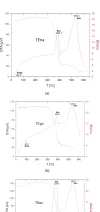
That's a good find.
Structural Insights and Intermolecular Energy for Some Medium and Long-Chain Testosterone Esters
Testosterone (17β-Hydroxyandrost-4-en-3-one) is the primary male anabolic-androgenic steroid. The crystal structures of two medium and two long esterified forms of testosterone, including enanthate, cypionate, decanoate and undecanoate, were determined by X-ray single crystal diffraction. The...www.mdpi.com
both Test Cyp and Test E rock solid stable up to 300 deg C in nitrogen blanket.
Fig. S5 from supplemental material.
View attachment 302465
R
readalot
Guest
Appreciate it and my pleasure.That's a good find.
My hypothesis is the Test E reference standard will come through GCMS 99%+ unscathed. I don't think the vast majority of structural impurities detected in the Test ester raws are an artifact of the GCMS measurement. They are present in the raw.
What's your temperature program on the GCMS? 180 to 300 deg C range?
Last edited by a moderator:
Mostly 350C.
Testosterone really hates being a gas.
Testosterone really hates being a gas.
R
readalot
Guest
Whoa. This could get interesting. I thought most GCMS temp ramps for AAS were between 180 to 300 C aka non destructive. Thanks for the info. You may need to lower the max temp.Mostly 350C.
Testosterone really hates being a gas.
But good to see what your baseline analysis reveals for current temp ramp in house.
Thank you!!
I use higher temps for quite important reasons 
Cheers
Cheers
R
readalot
Guest
Instrumentation
The GC/EI-MS/MS was performed using Agilent 7000 Series Triple Quadrupole GC/MS.
The GC system was equipped with the GC HP Ultra 1 column (21 m, i.d. 0, 2 m, film thickness 0.1 µm). A volume of 2 µl of the sample was injected in the GC system wich was operated in the split (15.8:1) mode. The GC oven temperature program started at 186C, was increased at 2C /min to 240C, followed by 22C/min to 320 C using helium as carrier gas (0.8 ml/min constant pressure). The injector and interface temperatures were set to 300C and the ion source was operated at 230C, electron ionization (EI) was used (70 eV).
==========

Using Comprehensive GC×GC–TOF-MS for Enhanced Detection and Separation in Antidoping Control Screening | Spectroscopy Online
The misuse of androgenic anabolic steroids in sports was banned in 1976 by the International Olympic Committee and global sports community. The illegal use of anabolic steroids has reached disturbing levels worldwide. This worldwide problem is fueled partially by an ever-increasing demand for...
The helium carrier gas flow rate was set to 1.5 mL/min at a corrected constant flow via pressure ramps. The primary column was programmed with an initial temperature of 140 °C for 0.20 min then ramped at 20 °C/min to 170 °C, next ramped at 5 °C/min to 260 °C for 2.0 min, with a final ramp at 10 °C/min to 315 °C for 12.0 min. The secondary column temperature program was set to an initial temperature of 145 °C for 0.20 min then ramped at 20 °C/min to 175 °C, next ramped at 5 °C/min to 265 °C for 2.0 min, with a final ramp at 10 °C/min to 320 °C for 12.0 min.
=======
Anabolic Steroid Esters Extraction
A 100 mg of decontamined hair was incubated overnight at 50 °C in 1 mL MeOH in presence of 2 ng
testosterone-d3 and nandrolone-d3. After incubation, methanol was evaporated to dryness. The residue was reconstituted in 3 mL of 1 M phosphate buffer (pH 7.0). As anabolic steroids, extraction was made with C18 based SPE cartridges. The eluent was evaporated to dryness, and the residue reconstituted in 0.5 mL of 1 M phosphate buffer (pH 7.0). A further purification step was achieved by addition of 4 mL of hexane-ethyl
acetate (70:30, v/v). After agitation and centrifugation, the organic phase was removed and evaporated to
dryness. The residue was derivatized by adding 5 μL MSTFA-NH4I- 2-mercaptoethanol (250 μL, 5 mg, 15 μL respectively) and 45 μL MSTFA, then incubated for 20 min at 60 °C.
GC method
The samples were injected by splitless injection (1 μL, 270 °C, purge at 50 mL/min after 1 min) into a carrier gas of helium at a constant flow rate of 1.2 mL/min delivered from an Agilent 6890 GC. The column was an Ohio Valley OV 30m x 0.25 mm i.d., 0.25μm. The following temperature ramp rate was used: 60 to 325 °C (5 min) at 20 °C/min. The total run time was 18.25 min
=======

(PDF) Thermal stability evaluation of doping compounds before GC-MS analysis by DSC
PDF | The Medical Commission of the International Olympic Committee forbids the use of anabolic androgenic steroids, β-agonists, stimulant and narcotic... | Find, read and cite all the research you need on ResearchGate
Last edited by a moderator:
BigNoOne
Banned
How are compounds tested for purity that go to the compounding pharmacies. Do the same.Appreciate it and my pleasure.
My hypothesis is the Test E reference standard will come through GCMS 99%+ unscathed. I don't think the vast majority of structural impurities detected in the Test ester raws are an artifact of the GCMS measurement. They are present in the raw.
What's your temperature program on the GCMS? 180 to 300 deg C range?
It’s HPLC testing.
Similar threads
- Replies
- 12
- Views
- 388


